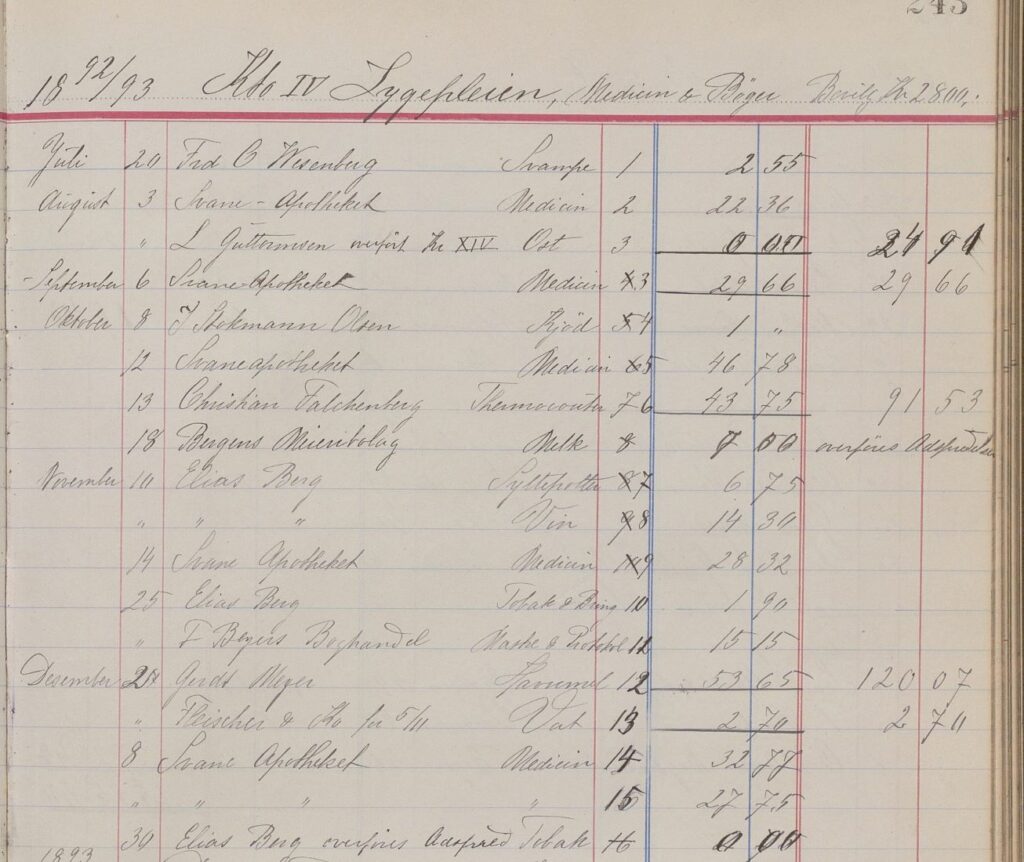Dr Danielssen’s meat treatment
In Lungegård Hospital’s triennial report for the years 1865–67, Dr Danielssen describes what he calls ‘a kind of meat cure’. It seems he developed the treatment himself, as he does not refer to any others having used it. He put three patients on the meat treatment, which he tested against the tuberculoid form of leprosy.
It is clear from the description that the meat treatment was a diet consisting of milk, bread, meat soup and red wine. This was likely one of the most enjoyable and least dangerous treatments to which the patients were subjected. In the morning, the patients were given one pel of milk, which is just under 250 ml, along with some bread rolls for one and a half shillings, but no butter. For dinner they had three pels of meat soup with onions and without grains, made using 24 lodds of meat, or about 384 grams. Every other day, the meat was to be lightly browned in a little butter. In the evening, they were given half a pel of red wine mixed with the same amount of water and bread rolls without butter. After a month and a half, the daily wine ration was doubled, but split between dinner and the evening meal. After another month and a half, the portion of meat was increased to 36 lodd (576 g) and after another month and a half, the milk portion was doubled. Two of the patients also received potassium iodide in the meat soup.
The treatment lasted just over six months but did not work on any of the patients. One of the patients initially got better, but the nodules returned after a few months. The other two never got better – quite the reverse, in fact.
Danielssen believed that the poor results could be down to the fact that the disease had advanced too far before the treatment was started. He therefore wished to repeat the trial when there were more suitable candidates, but it does not appear that he tried the treatment again. Danielssen says nothing about the kind of effect he expected the treatment to have, or why he devised this particular menu.

The Regional State Archives of Bergen.



